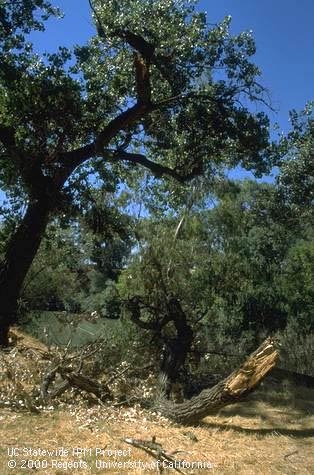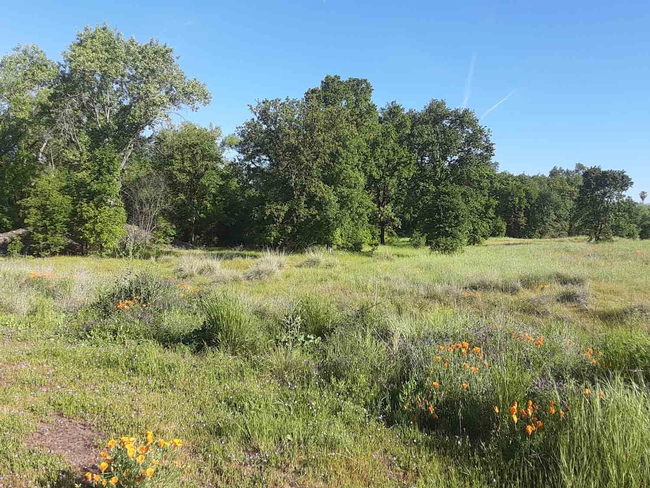At this time of the year, it is not uncommon for large branches to suddenly drop from oak trees without warning. Although this phenomenon is not limited to oaks, the sheer size of their branches makes summer branch drop (also known as “sudden limb failure”) in oaks much more hazardous for life and property than branch drop by other tree species. Dr. Richard Harris, Professor of Landscape Horticulture at UC Davis, published an article on the topic in the Journal of Arboriculture in April 1983 describing this condition and its possible causes, and suggested steps that tree owners can take to reduce the hazard of summer branch drop.

Drought stress may somehow contribute to summer branch drop, but at this time, there is no generally accepted hypothesis that explains this occurrence. In California this type of limb failure occurs on both native and planted trees as well as in irrigated and un-irrigated landscapes. One possibility is that drought stress during a hot calm afternoon reduces the flow of water in the branch, causing the branch temperature and the concentration of ethylene to increase. Ethylene, a gaseous hormone found in all plants, is known to promote the process of cell aging. Elevated levels of ethylene may weaken the cell wall cementation which when coupled with reduced transpiration and increased root pressure, increases internal sap pressure, moisture content of branches, and limb weight, resulting in branch failure. Old wounds and decay hidden inside a limb (possibly resulting from improper pruning) occasionally contribute to branch drop, but this does not account for the majority of summer branch drop failures. Pruning that encourages uneven growth at the end of a limb can put tremendous stress on the limb due to the added weight of the new growth.

UC Master Gardeners of Butte County are part of the University of California Cooperative Extension (UCCE) system. To learn more about us and our upcoming events, and for help with gardening in our area, visit our website. If you have a gardening question or problem, email the Hotline at mgbutte@ucanr.edu (preferred) or call (530) 538-7201.